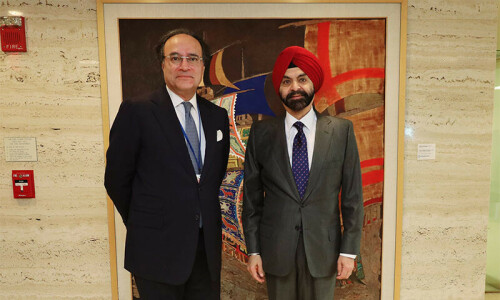Just outside Dhaka is a cluster of scenic villages, with humble bamboo huts set among lush green paddy fields. Listen closely as you approach and you will feel the entire place resonate with the steady rhythmic clicking of rudimentary bamboo looms. This weaving technique is as ancient as the intricate patterns that are produced by the fabled Jamdani weavers of Bangladesh.
Said to be woven with the ‘threads of winds’, the history of the Jamdani can be traced back over 2,000 years and accounts by Roman and Greek raconteurs prove that this ‘Gangetic muslin’ was amongst the most prized article among traders even centuries ago.
A figured muslin with floral motifs woven in by brocading method, Jamdani is truly the queen of the delicate muslin of Dhaka. Elaborate motifs are embroidered into the fabric by hand while it is being woven, making it a form of loom-embroidery. The intricate patterns are formed by passing small bamboo shuttles of coloured, gold or silver threads through the weft; separate bobbins of different coloured threads are employed for weaving the designs. Tamarind wood or bamboo is employed to fashion these fine bobbins. The result is myriads of floral patterns interlaced with gold and silver yarn which give the effect of jewels dotted over a shimmering surface.
There is no substantiated etymological explanation of the origin of the word Jamdani but according to popular belief, the word is of Persian origin, derived from ‘jama’ (cloth) and ‘dana’ (woven motif).
Kautilya’s Arthashashtra, a book on economics (circa third century, BCE), is thought to be the earliest account of the origin of this muslin and its development. The Periplus of the Erythrean Sea, a maritime treatise on east-west trade, circa first CE, as well as manuscripts of the Arab, Chinese and European traders wax lyrical over the sheer delicacy of this fabric. “The fabric is so delicate that a piece ten yards long and one yard wide could pass through a wedding band,” is how one connoisseur described Jamdani muslin.
The patronage of the Mughal rulers lifted the skill of muslin weaving to an art par excellence. Abul Fazal, in Ain-i-Akbari divulges that Emperor Akbar was a great benefactor of this industry. The art of muslin weaving was nurtured in Mughal aurangs or workshops, set up in almost every village of Dhaka. The Mughal administration engaged agents who governed the best weavers and totally monopolised their products so that muslin, which was already a rich man’s luxury, now became a complete royal monopoly; a privilege that only the royalty could afford. The muslin that was now permitted to be sold to the European merchants was coarse compared to that favoured by the Mughal court. The textile woven for the crowned heads was dubbed Mulmal Khas and the governing agents labelled it with poetic names such as Aab-i-rawan, Sharbati and Shabnam.
The Empress Nurjehan, too, was a patron of these diaphanous and feather-light textiles and even the austere Aurangzeb was incredibly fond of muslin. Emperor Shahjahan, and later Emperor Aurangzeb, received a tribute from the weavers of Dhaka year after year and their gifts, in all their diaphanous beauty, were paraded through the streets of Dhaka in cases of gilded bamboo before being presented to the Emperor. It is said that annually about Rs100,000 worth of Mulmul Khas was presented to the Mughal royalty.
After the British conquest of India, the aurangs that were once under the relatively considerate Mughal administration now came under British occupation. British agents invested huge sums in the industry and created a virtual monopoly for themselves. According to the writings of James Wise, Dhaka trade in muslin was at its zenith in 1787, and muslin worth five million rupees was exported to Europe, most of which was Jamdani muslin.
However, this excessive greed for Jamdani itself resulted in the decline of the muslin industry shortly after the end of the 18th century. Many factors contributed to the slump, the most destructive factor being the dictation of prices by the agents of East India Company who exploited the weavers for their own financial gains. Other factors that heavily contributed to the decline were the import of cheaper but shoddier quality yarn and mass produced machine textile from Europe. By the end of the first half of the 19th century, export came to a halt and by the end of this century the illustrious Dhaka Jamdani muslin had virtually passed into history.
Despite the end of its glorious era, Jamdani muslin has survived into modern times, adapting to changing tastes and trends. Within the last few decades, Jamdani designs have become au courant and more stylish than ever. No longer is hand-spun cotton yarn the sole material of choice; Jamdani can now be woven with a combination of silk and cotton or even just silk. And the colours are no longer restricted to the off-white, grey and indigo palette of yore; Jamdani is now available in a wealth of vibrant as well as soft mellow tones.
Today’s weavers are campaigning for the revival of many of the traditional and more intricate motifs; designs which required many long months to be spent at the loom to produce fabric worthy of rank and royalty. The muslin may no longer be fine enough to pass through a wedding ring, but the efforts of the weavers have retained the art of weaving this fabric worthy of a queen.
















































Dear visitor, the comments section is undergoing an overhaul and will return soon.